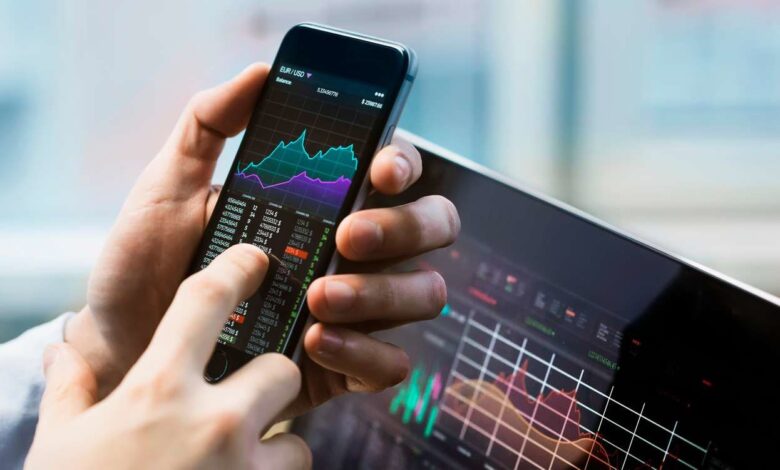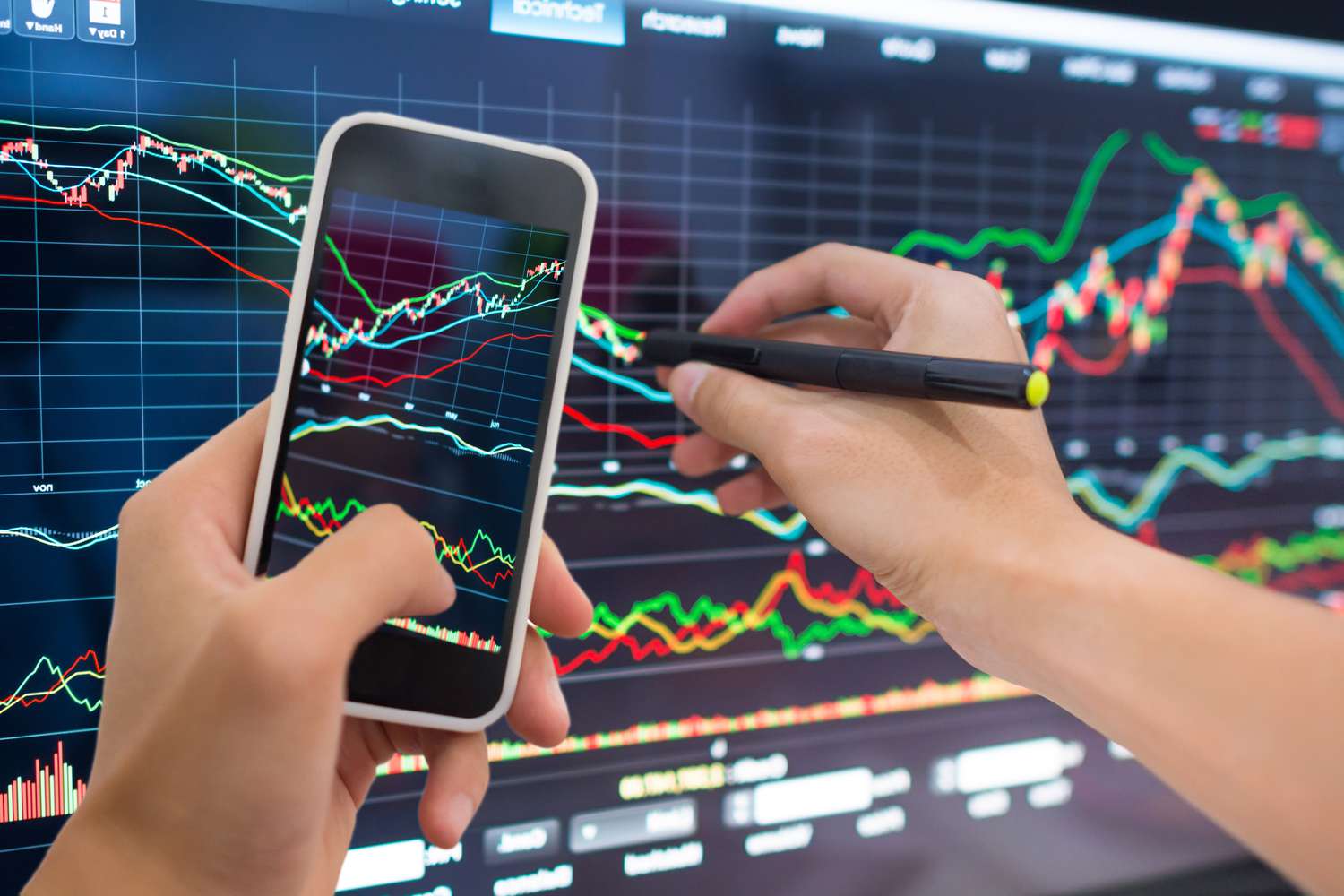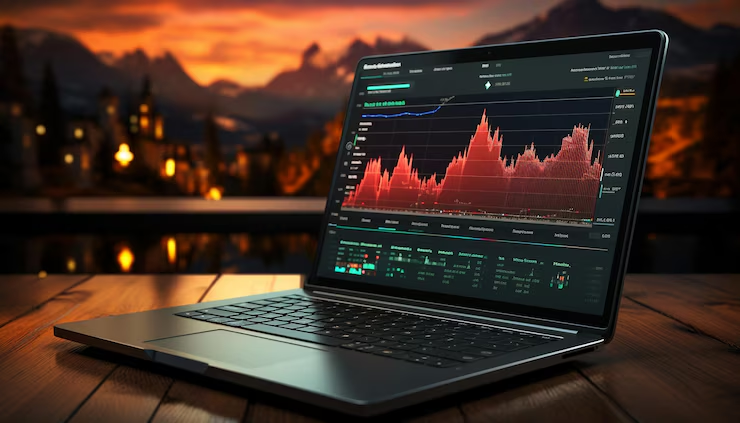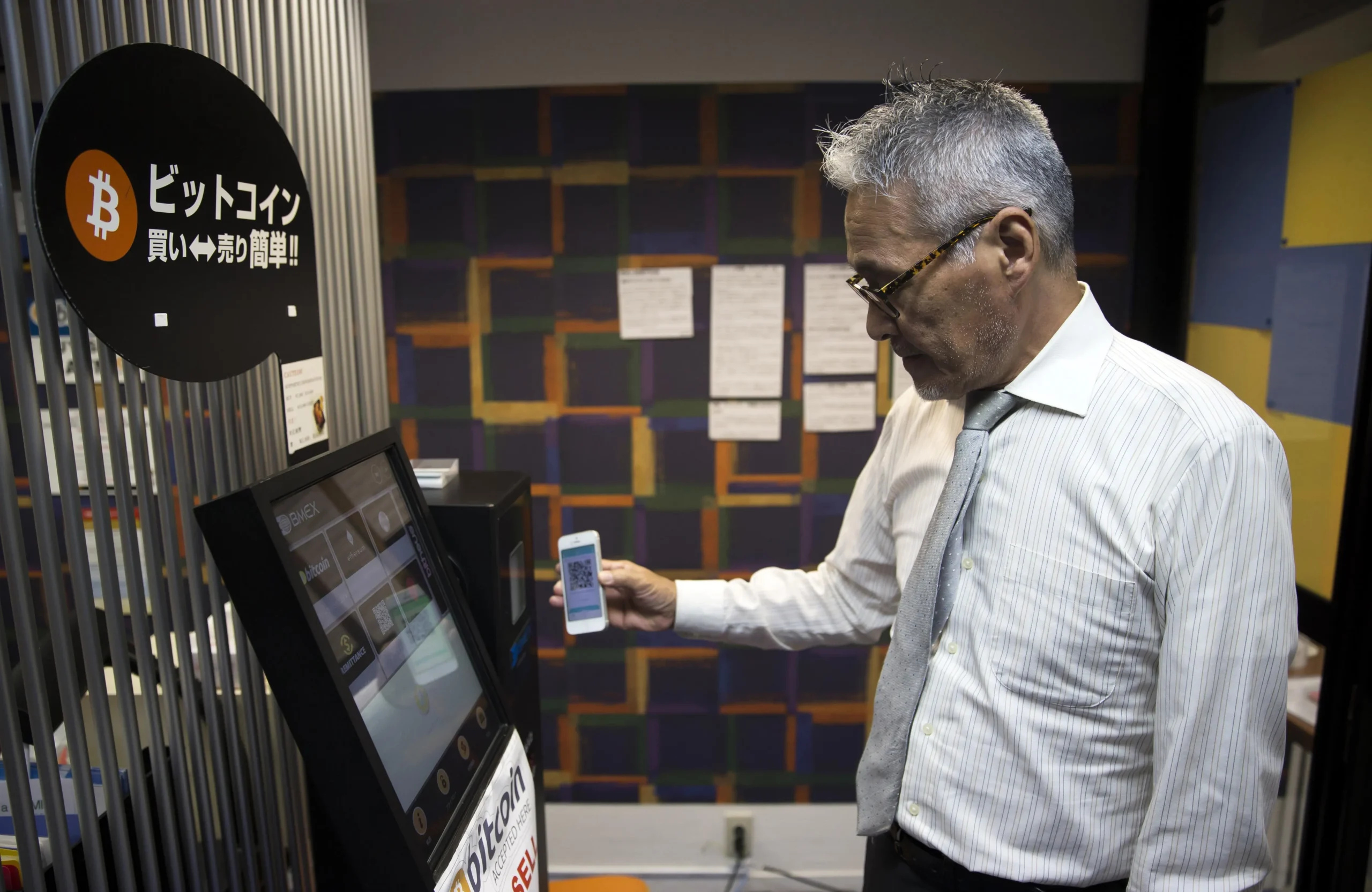Best Trading App Without Investment Free Virtual Trading in 2025

Finding the right trading app without investment can be the perfect gateway to enter the world of financial markets without risking your hard-earned money. Whether you’re a complete beginner looking to understand market dynamics or an experienced trader wanting to test new strategies, virtual trading platforms offer an invaluable learning experience. The beauty of a trading app without investment lies in its ability to provide real-time market conditions while using virtual funds.
This approach allows you to develop trading skills, understand market volatility, and build confidence before committing actual capital. In today’s digital age, numerous platforms offer comprehensive trading experiences that mirror real market conditions, making them essential tools for aspiring traders. Modern trading simulators have evolved significantly, offering features that were once exclusive to professional trading platforms, from advanced charting tools to real-time news feeds.
What is a Trading App Without Investment
A trading app without investment is a virtual trading platform that allows users to practice buying and selling financial instruments using simulated money instead of real funds. These applications, also known as paper trading or demo trading platforms, replicate actual market conditions while eliminating financial risk. Users receive virtual currency, usually ranging from $10,000 to $100,000, to execute trades and monitor their portfolio performance over time.
The primary purpose of these applications is educational, helping users understand market mechanics, develop trading strategies, and gain experience with different financial instruments. Many successful traders credit their initial success to extensive practice on virtual trading platforms before transitioning to real money trading. These platforms typically offer access to various financial markets, including stocks, forex, cryptocurrencies, commodities, and indices, providing comprehensive exposure to different asset classes.
Key Features of Virtual Trading Platforms
Modern trading apps without investment come equipped with sophisticated features that enhance the learning experience, starting with real-time market data access to live market prices and movements that ensure users experience authentic trading conditions. Advanced charting tools provide technical analysis capabilities with various indicators, drawing tools, and chart patterns that mirror professional trading environments. Portfolio tracking offers comprehensive performance monitoring with profit/loss statements and trading history for detailed analysis.
Educational resources built into these platforms include tutorials, webinars, and market analysis to support continuous learning and skill development. Multiple asset classes provide exposure to different markets, including equities, forex, commodities, and cryptocurrencies, allowing users to explore various trading opportunities. Social features enable interaction with other traders, strategy sharing, and learning from experienced community members who provide valuable insights and mentorship.
Top Trading Apps Without Investment in 2025
TradingView Paper Trading
TradingView stands out as one of the most comprehensive platforms offering paper trading functionality, known for its advanced charting capabilities that allow users to practice trading while accessing professional-grade tools and social trading features. The platform offers real-time data across global markets and includes a vibrant community where traders share ideas and strategies, creating an interactive learning environment.
What makes TradingView particularly valuable is its combination of sophisticated technical analysis tools with social trading features that facilitate learning from experienced traders. The platform provides access to multiple timeframes, hundreds of technical indicators, and drawing tools that professional traders use daily. The community aspect allows users to publish trading ideas, follow successful traders, and participate in discussions about market trends and strategies.
Investopedia Stock Simulator
Investopedia’s Stock Simulator has been a go-to platform for beginners for over two decades, providing $100,000 in virtual cash and access to real-time quotes for stocks, ETFs, and mutual funds. What sets Investopedia apart is its extensive educational content that allows users to participate in trading competitions, access detailed tutorials, and learn from comprehensive market analysis articles while practicing their trading skills.
The simulator offers a user-friendly interface that’s perfect for beginners who need to understand basic trading concepts before moving to more advanced platforms. Regular trading competitions add excitement and motivation, while the vast library of educational articles helps users understand the reasoning behind different trading strategies. The platform also provides detailed performance analytics that help users track their progress and identify areas for improvement.
TD Ameritrade thinkorswim
TD Ameritrade’s thinkorswim platform offers one of the most sophisticated paper trading experiences available, providing access to the same tools and features available to real money accounts, including advanced options strategies and complex order types. The platform includes streaming real-time data, customizable watchlists, and professional-level analysis tools that prepare users for advanced trading scenarios.
The thinkorswim platform excels in providing institutional-quality tools and features that serious traders require for comprehensive market analysis and strategy development. Advanced features include options chain analysis, futures trading capabilities, and sophisticated risk management tools that help users understand complex trading scenarios. The platform’s educational resources include live webcasts, tutorials, and strategy guides that complement the hands-on trading experience.
Webull Paper Trading
Webull offers a comprehensive paper trading feature within its mobile app, making it ideal for users who prefer trading on mobile devices and need access to commission-free virtual trading with stocks, ETFs, options, and cryptocurrencies. The app includes real-time market data, advanced charting tools, and social features that allow users to follow successful traders and learn from their strategies.
The platform’s strength lies in its combination of comprehensive market access with a user-friendly mobile interface design that doesn’t compromise on functionality. Advanced charting capabilities typically found only on desktop platforms are seamlessly integrated into the mobile experience. Social trading features allow users to see what positions other traders are taking, follow successful investors, and learn from community discussions about market trends and opportunities.
Benefits of Using Trading Apps Without Investment

Risk-Free Learning Environment
The most significant advantage of using a trading app without investment is the elimination of financial risk, allowing beginners to make mistakes, learn from them, and develop their skills without losing real money. This safety net encourages experimentation and helps build confidence while removing the emotional pressure that often leads to poor decision-making when real money is involved.
New traders often experience emotional challenges when real money is involved, leading to fear-based decisions, overconfidence, or revenge trading after losses. Virtual trading removes this emotional pressure, creating an environment where users can develop rational decision-making processes and build confidence through experience. This psychological benefit is crucial for developing the mental discipline required for successful trading, as emotions are often the biggest obstacle to consistent profitability.
Strategy Development and Testing
Experienced traders use virtual trading platforms to test new strategies before implementing them with real money, allowing for thorough backtesting and strategy refinement without financial consequences. Users can experiment with different trading styles, from day trading to swing trading, and determine which approach best suits their personality, schedule, and risk tolerance.
The ability to test multiple strategies simultaneously or over different market conditions provides valuable insights into strategy effectiveness and market adaptability. Traders can analyze how their strategies perform during different market cycles, economic events, and volatility periods. This comprehensive testing approach helps identify the most robust strategies and reveals potential weaknesses before risking real capital, significantly improving the chances of success when transitioning to live trading.
Market Familiarization
Virtual trading apps provide exposure to various financial markets and instruments, allowing users to explore stocks, forex, commodities, and cryptocurrencies while gaining valuable insights into how different markets behave and correlate with each other. This broad exposure helps traders identify their preferred markets and understand global economic factors that influence price movements across different asset classes.
The educational value of market familiarization extends beyond individual instruments to include understanding market hours, settlement procedures, margin requirements, and regulatory differences across various markets. This knowledge becomes invaluable when making decisions about which markets to focus on and how to structure trading approaches for different asset classes.
Building Trading Discipline
Successful trading requires discipline and emotional control, and virtual trading platforms help develop these crucial skills by providing a structured environment where users can practice following trading plans and managing risk effectively. Users learn to set stop-losses, take profits at predetermined levels, and avoid common psychological traps that lead to trading losses.
Discipline development includes learning to stick to predetermined position sizes, maintaining trading journals, conducting post-trade analysis, and following systematic approaches to market analysis. Virtual trading allows users to practice these disciplines repeatedly until they become automatic habits. The platform provides accountability through performance tracking and helps users identify when they deviate from their planned approaches, creating awareness that leads to improved consistency.
How to Choose the Right Trading App Without Investment
Evaluate Platform Features
When selecting a trading app without investment, consider the features that align with your learning objectives and look for platforms offering real-time data, comprehensive charting tools, and access to your preferred markets. Advanced features like options trading, forex capabilities, and cryptocurrency access may be important depending on your trading interests and career goals.
The evaluation process should include testing the platform’s execution speed, data quality, and user interface responsiveness, as these factors directly impact the quality of your virtual trading experience. Consider whether the platform offers the specific markets and instruments you want to learn about, and verify that the charting tools and indicators match your analytical preferences.
Consider User Interface and Experience
A user-friendly interface is crucial for effective learning, so choose platforms with intuitive navigation, customizable layouts, and mobile compatibility if you prefer trading on mobile devices. The platform should provide clear portfolio tracking, easy order placement, and comprehensive reporting features to monitor your virtual trading performance effectively.
User experience considerations extend beyond visual design to include platform stability, loading speeds, and the logical flow of trading processes from research to execution. The best platforms offer customizable workspaces that allow you to arrange charts, watchlists, and trading tools according to your preferences. Mobile compatibility is increasingly important as many traders need the flexibility to monitor markets and execute trades while away from their computers.
Check Educational Resources
The best trading apps without investment offer extensive educational content, including tutorials, webinars, market analysis, and trading courses that accelerate the learning process and provide ongoing support as you develop your trading skills. Look for platforms that offer community features where you can interact with other traders, ask questions, and learn from more experienced participants.
Educational resource evaluation should consider the depth and breadth of content available, the quality of instructional materials, and the accessibility of support when you have questions. Some platforms offer structured learning paths that guide beginners through essential concepts in logical progression. Advanced educational features might include strategy backtesting tools, market scenario simulations, and access to professional market analysis that provides context for trading decisions.
Assess Data Quality and Speed
Real-time, accurate market data is essential for meaningful practice, so ensure the platform provides reliable data feeds with minimal delays, as this directly impacts the quality of your virtual trading experience. Some platforms offer delayed data for free accounts, which may be acceptable for learning basic concepts but less suitable for developing timing-sensitive strategies.
Consider the range of markets and instruments for which the platform provides data, as well as the historical data availability for backtesting and analysis purposes. Professional-grade platforms often provide Level II data, options chains, and futures data that enhance the learning experience for advanced users. The reliability of data feeds during high-volume periods and market volatility is particularly important for understanding how markets behave during challenging conditions.
Best Practices for Virtual Trading Success
Treat Virtual Money Like Real Money
To maximize the learning value from your trading app without investment, approach virtual trading with the same seriousness as real money trading by setting realistic position sizes, following risk management rules, and maintaining detailed trading records. This disciplined approach ensures that the habits you develop during virtual trading will serve you well when transitioning to real money accounts.
Developing the right mindset during virtual trading involves setting realistic goals, following predetermined trading plans, and experiencing the emotional aspects of winning and losing trades even without real financial consequences. Practice position sizing based on your actual account size goals, not the inflated virtual account balance. This approach helps develop proper risk management instincts and creates realistic expectations about potential returns and drawdowns.
Set Realistic Goals and Expectations
Establish clear learning objectives for your virtual trading experience, whether focusing on technical analysis, fundamental research, or specific trading strategies, as having defined goals helps maintain focus and measure progress effectively. Avoid unrealistic expectations about returns and remember that virtual trading should focus on skill development rather than achieving extraordinary profits that may not be sustainable with real money.
Goal setting should include specific milestones such as achieving consistent profitability over multiple months, mastering particular technical indicators, or successfully trading specific market conditions. Track progress through detailed record-keeping and regular performance reviews that identify strengths and areas requiring improvement. Realistic expectations help maintain motivation during inevitable losing periods and provide a framework for measuring genuine progress in trading skill development.
Keep Detailed Trading Records
Maintain comprehensive records of all virtual trades, including entry and exit points, reasoning behind each trade, and lessons learned, as this documentation becomes invaluable for identifying strengths and weaknesses in your trading approach. Regular review of trading records helps identify patterns, successful strategies, and areas requiring improvement, and this analytical approach accelerates the learning process and builds the foundation for future success.
Effective record-keeping should include market conditions at the time of each trade, the technical or fundamental analysis that led to the decision, and post-trade analysis of what worked well or could be improved. Include screenshots of charts and notes about market context to create a comprehensive learning database. This information becomes increasingly valuable over time as it helps identify which strategies work best in different market environments and personal trading conditions.
Learn from Mistakes Without Emotional Attachment
Virtual trading provides the perfect environment to make mistakes and learn from them without financial consequences, so embrace losses as learning opportunities and analyze what went wrong rather than dwelling on missed profits. This objective approach to analyzing both winning and losing trades builds the analytical skills necessary for long-term trading success.
Mistake analysis should focus on identifying systematic errors, emotional decision-making patterns, and areas where additional knowledge or skills are needed. Create a systematic review process that examines both individual trades and overall performance trends to identify recurring issues. This analytical approach develops the critical thinking skills necessary for continuous improvement and helps build the objective mindset required for successful trading under pressure.
Transitioning from Virtual to Real Money Trading

Gradual Transition Strategy
When ready to transition from virtual to real money trading, start with small position sizes to manage risk while applying learned skills, as many successful traders recommend starting with amounts they can afford to lose completely. This gradual approach allows for continued learning while introducing the emotional aspects of real money trading that cannot be fully simulated in virtual environments.
The transition strategy should include specific criteria for increasing position sizes and risk levels based on demonstrated consistency and profitability over extended periods. Consider starting with micro positions that allow you to experience real money emotions without a significant financial impact. This approach helps bridge the gap between virtual and real trading while maintaining focus on skill development rather than profit maximization during the early stages.
Maintaining Risk Management Discipline
The risk management practices developed during virtual trading become crucial when transitioning to real money, so maintain the same percentage-based position sizing and stop-loss levels used in virtual trading. Many traders find that emotions intensify significantly when real money is involved, making strict adherence to pre-established rules even more important.
Develop systematic approaches to position sizing, stop-loss placement, and profit-taking that can be followed consistently regardless of emotional state or market conditions. Create written trading rules and checklists that help maintain discipline during stressful periods. The transition to real money often reveals emotional responses that weren’t apparent during virtual trading, making systematic approaches to risk management essential for maintaining consistent performance.
Continuing Education and Improvement
The learning process continues long after transitioning to real money trading, so maintain connections with educational resources, trading communities, and mentors discovered during your virtual trading journey. Regular review and refinement of trading strategies remain essential for long-term success in financial markets, as markets evolve and require continuous adaptation of approaches and techniques.
Continuing education should include staying current with market developments, learning new analysis techniques, and adapting strategies based on changing market conditions and personal performance results. Maintain involvement in trading communities and consider formal education opportunities such as courses, seminars, or certification programs that deepen understanding of markets and trading psychology.
Common Mistakes to Avoid in Virtual Trading
Over-Trading and Unrealistic Risk-Taking
Without real money consequences, many virtual traders develop bad habits like over-trading or taking excessive risks they would never consider with actual funds, and these habits can be difficult to break when transitioning to real money trading. Maintain realistic position sizes and trading frequencies that would be appropriate for your actual financial situation and risk tolerance.
Unrealistic risk-taking during virtual trading can create false confidence and unrealistic expectations about potential returns, leading to significant losses when transitioning to real money. Practice proper position sizing based on realistic account sizes and risk tolerance levels that match your actual financial situation.
Ignoring Fundamental Analysis
While technical analysis is important, successful trading often requires understanding fundamental factors that drive market movements, so don’t neglect learning about economic indicators, company financials, and market news during your virtual trading experience. Develop a balanced approach that incorporates both technical and fundamental analysis for making informed trading decisions.
Fundamental analysis skills include understanding financial statements, economic data interpretation, industry analysis, and global economic factors that influence market movements. Practice incorporating news events, earnings reports, and economic releases into your trading decisions during virtual trading.
Focusing Only on Profits
Virtual trading success should be measured by skill development rather than just profit generation, so focus on consistency, risk management, and the quality of trading decisions rather than solely on returns. This approach builds the foundation for sustainable real money trading success by emphasizing the processes and disciplines that lead to long-term profitability.
Skill development metrics should include consistency of following trading plans, accuracy of market analysis, improvement in risk management, and development of emotional control under various market conditions. Track qualitative measures such as the quality of trade setups, adherence to predetermined criteria, and improvement in analytical skills.
Advanced Features in Modern Trading Apps

Artificial Intelligence and Machine Learning
Modern trading apps without investment increasingly incorporate AI-driven features like pattern recognition, automated alerts, and predictive analytics that enhance the learning experience by providing insights that might be missed by inexperienced traders. AI-powered features can help identify potential trading opportunities, suggest risk management adjustments, and provide market sentiment analysis based on news and social media data.
Machine learning algorithms can analyze vast amounts of market data to identify patterns and correlations that human traders might overlook, providing educational value through automated insights and suggestions. Some platforms use AI to personalize the learning experience by adapting educational content and trading suggestions based on individual performance and preferences.
Social Trading and Copy Trading
Many platforms now offer social trading features that allow users to follow successful traders and even copy their trades automatically, providing valuable learning opportunities by observing how experienced traders approach different market conditions. Copy trading in virtual environments allows users to understand successful strategies without risking real money while learning from proven performers.
Social trading functionality extends beyond simple copy trading to include discussion forums, strategy sharing, and collaborative analysis that enhances the educational value of virtual trading. Users can see the reasoning behind successful trades, ask questions about strategy development, and learn from the mistakes and successes of others.
Integration with Real Trading Platforms
Leading brokers often provide seamless integration between their virtual and real trading platforms, allowing users to transition smoothly from practice to live trading while maintaining familiar interfaces and features. Such integration ensures that the skills and platform familiarity developed during virtual trading directly apply to real money trading, reducing the learning curve when making the transition.
Platform integration often includes shared watchlists, saved chart layouts, and trading system configurations that transfer from virtual to real accounts, creating continuity in the trading experience. Some platforms allow users to switch between virtual and real modes instantly, enabling continued practice and strategy development alongside real money trading.
Market Analysis Tools for Better Trading
Technical Analysis Capabilities
Comprehensive charting tools are essential features of quality trading apps without investment, so look for platforms offering various chart types, technical indicators, and drawing tools for conducting thorough market analysis. Popular indicators include moving averages, RSI, MACD, Bollinger Bands, and volume indicators, and learning to use these tools effectively during virtual trading provides valuable skills for real market participation.
Technical analysis education should include understanding different chart timeframes, indicator interpretation, pattern recognition, and the development of systematic approaches to market analysis. Practice using multiple indicators in combination and learn to identify high-probability trade setups using technical analysis.
Fundamental Analysis Resources
Access to company financial data, earnings reports, economic calendars, and market news enhances the virtual trading experience by helping develop skills in evaluating investment opportunities based on underlying business and economic factors. Many platforms provide integrated news feeds, analyst ratings, and financial statement data to support comprehensive fundamental analysis. .
Fundamental analysis skills include interpreting financial statements, understanding valuation metrics, analyzing industry trends, and incorporating economic data into trading decisions. Practice using economic calendars to anticipate market-moving events and learn to interpret the impact of news releases on different markets and asset classes.
Real-Time Market Scanner
Advanced scanning tools help identify trading opportunities based on technical and fundamental criteria, teaching users how to systematically search for stocks or other instruments meeting specific trading requirements. Learning to use market scanners effectively during virtual trading provides valuable skills for identifying opportunities in real markets and helps develop systematic approaches to opportunity identification.
Scanner functionality should include the ability to search for specific technical patterns, fundamental characteristics, and price movements that align with your trading strategies. Practice creating and refining scanner criteria based on your preferred trading setups and learn to efficiently review scan results to identify the most promising opportunities.
Building a Trading Community
Learning from Other Traders
Many trading apps without investment include community features that facilitate learning from other participants, providing opportunities to discuss strategies, share market insights, and learn from both successes and failures of fellow traders. Active participation in trading communities accelerates learning and provides ongoing support throughout the skill development process.
Community engagement should include asking questions about market analysis, sharing trading experiences, and participating in discussions about market trends and opportunities. Learn from traders with different experience levels and trading styles to broaden your understanding of various approaches to market participation.
Participating in Trading Competitions
Virtual trading competitions add excitement to the learning process while providing benchmarks for measuring progress against other participants, and these competitions often feature prizes and recognition for top performers. Competitions encourage disciplined trading approaches and motivate consistent improvement in trading skills.
Competition participation should focus on learning and skill development rather than just winning, as the educational value comes from testing strategies under pressure and comparing approaches with other participants. Use competitions as opportunities to practice specific skills, test new strategies, and gain experience with different market conditions. .
Sharing Knowledge and Experiences
Contributing to trading communities by sharing experiences and insights reinforces learning while helping other participants, and teaching concepts to others often deepens understanding and identifies areas requiring additional study. This collaborative approach creates a supportive learning environment that benefits all community members and helps build lasting relationships with fellow traders. Sharing knowledge also provides opportunities to receive feedback on your understanding and approach to trading.
Knowledge sharing activities can include posting trade analyses, explaining market observations, answering questions from newer traders, and participating in strategy discussions. Document your learning journey and share both successes and failures to help others avoid common mistakes and accelerate their development. This teaching approach reinforces your learning while contributing to the broader trading education community.
Also Read: Best Crypto Trading Platform 2025 Complete Guide to Digital Asset Trading
Conclusion
Utilizing a trading app without investment represents one of the most effective ways to begin your trading journey safely and comprehensively, providing invaluable learning opportunities that allow you to develop essential skills, test strategies, and build confidence without risking real money. These platforms offer the tools, resources, and community support needed for continuous improvement and skill development in a risk-free environment.
The key to success lies in treating virtual trading seriously, maintaining discipline, and focusing on skill development rather than just profits, as this approach builds the foundation for future trading success. Whether you’re a complete beginner seeking to understand market fundamentals or an experienced trader looking to refine your approach, virtual trading platforms provide comprehensive solutions for trading education and strategy development.
The combination of real market data, professional-level tools, educational resources, and community features creates an ideal learning environment for developing trading expertise. As you embark on your virtual trading journey, remember that consistent practice, continuous learning, and disciplined risk management are the foundations of successful trading that will serve you well throughout your trading career.




